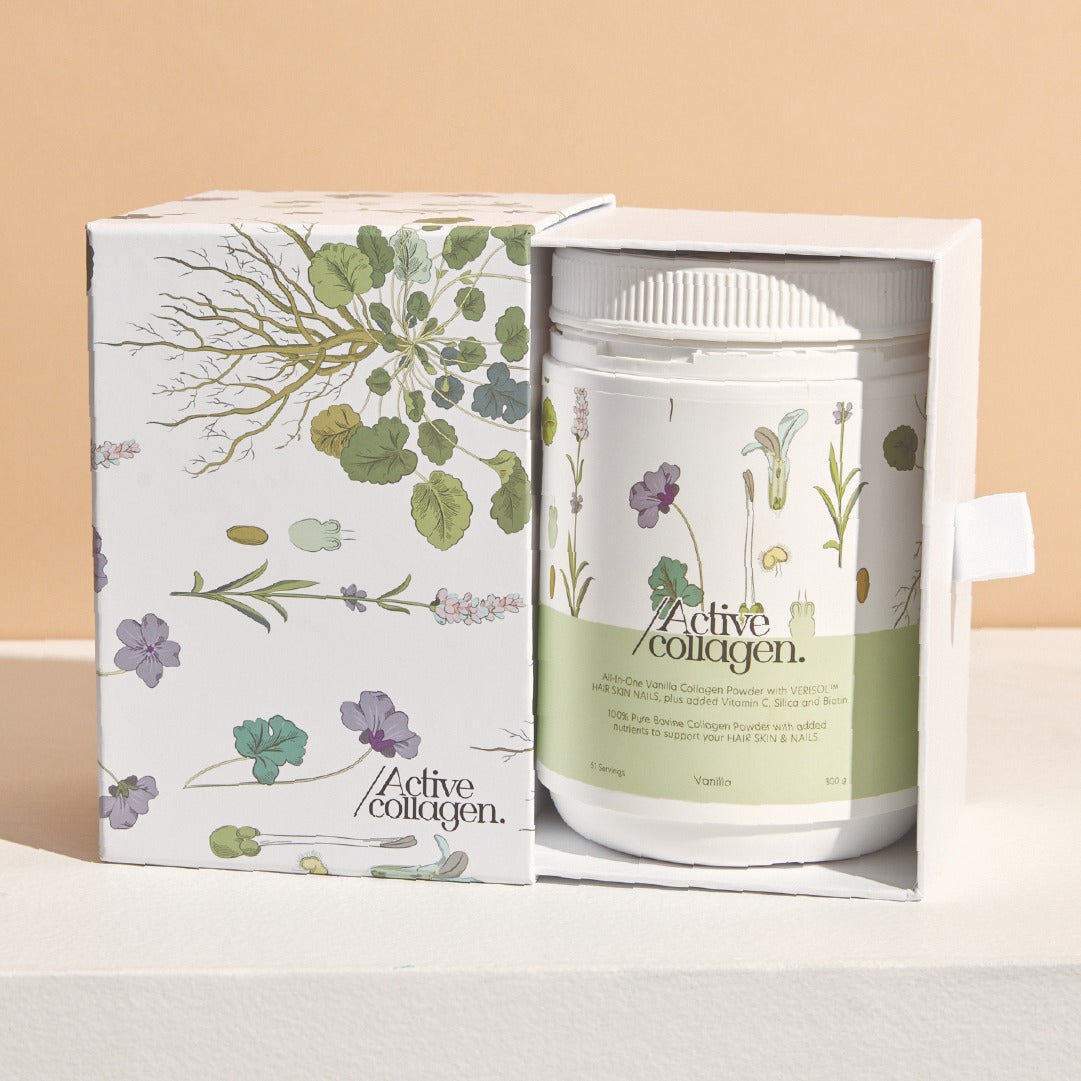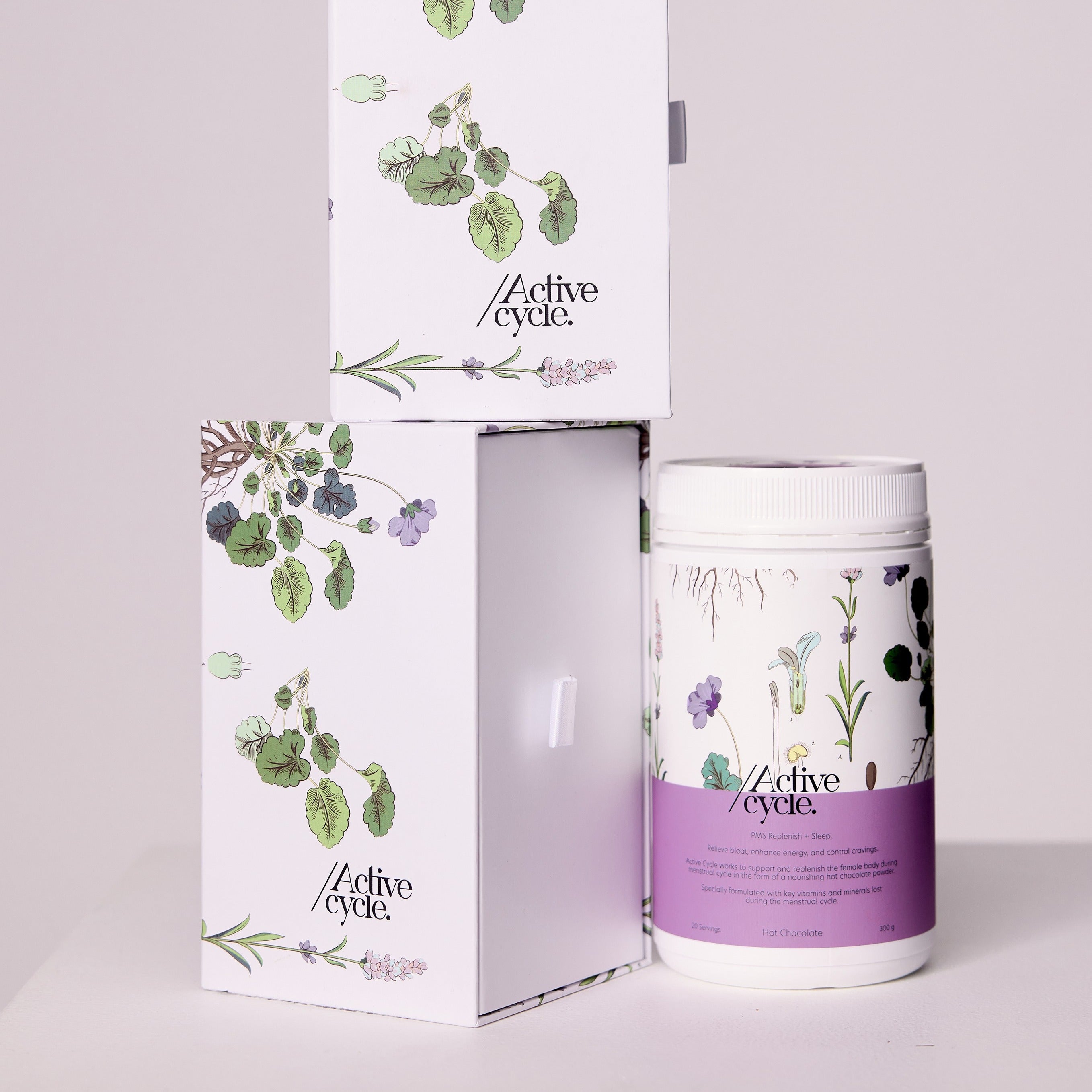Joint health – probably not as sexy a topic as gut health – is something everyone should be aware of. As we age or accumulate niggling injuries it is highly likely you’ve woken up in the morning noticing a few new clicks and cracks. We hear you, literally! This is unfortunately a reality check that our bodies are aging and now require more TLC than we may realise.
Joints are essentially the point where two bones meet and are joined by connective tissue, ligaments, cartilage and fibres, including collagen. Our bodies contain three different types of joints: fibrous, cartilaginous and synovial. Synovial are the most freely moving such as the knee, toes, spine and elbow, and these joints are probably the first of which we notice niggles and cracks from.
The freedom of movement is governed by healthy joints – and a little extra help from our muscles of course. However, as we age or become injured the freedom of movement and pain-free movement is governed by how well we take care of our joints. And supporting your joint health shouldn’t only begin when you first start noticing pain, clicks and cracks. Because prevention is so much better than cure right?
What’s Up with My Joints?
There are a few common joint issues that can arise throughout a lifetime. These being the 2 prevalent forms of arthritis: rheumatoid arthritis and osteoarthritis. As our populations age and life expectancies lengthen so does the prevalence of health problems like arthritis.
Joint injury, pain and damage in rheumatoid arthritis is understood to be caused by a great deal of inflammation occurring at and in the joint – known as synovial inflammation. The chronic inflammation is recognised as autoimmune (where the immune system attacks the body itself) causing cartilage erosion and changes in joint structure that cause restricted movement, swelling and loss of joint function.
Osteoarthritis is mainly caused by old age, overuse and, less often, injury. With osteoarthritis, the cartilage in the joints rub together breaking down over time due to wear and tear. Swelling, pain and inflammation are also present in osteoarthritis which causes loss and restriction of movement.
Both types are similar so be sure to get a professional diagnosis if you are experiencing these symptoms.
It’s likely everyone has been through a time in their life where they have experienced some kind of joint pain that has stopped them from performing basic tasks or simply prevented them from engaging in exercise for a period of time. So, how can we support our joint health to prevent joint issues?
Protect Your Joints with Nutrients
Protect your joints and start now. There are some mighty nutritional factors that can help maintain optimal joint health. And, conversely, an imbalance in these nutrients may increase your risk of joint issues.
Omega 3’s - Omega-3 polyunsaturated fatty acids are not only suggested as a recommended treatment option in arthritis but also for arthritic prevention due to the high anti-inflammatory properties of omega-3 in managing joint-specific inflammation. Fatty fish (salmon/tuna), seafood, walnuts, chia, flaxseeds and hemp seeds are all wonderful sources of omega 3’s.
Vitamin C – Like omega 3, vitamin C has a role in both prevention and maintaining joint health in arthritis. Vitamin C is a strong antioxidant that is able to scavenge free radicals and reactive oxygen species which are major contributors to inflammation, joint damage and cartilage degeneration. And one of our favourite properties of vitamin C is that it is needed for the synthesis of collagen, which makes up about 60% of cartilage. Ensure you’re getting vitamin C by eating an abundance of fresh wholefoods such as citrus, berries, leafy greens, broccoli and tomatoes.
Polyphenols – The benefits of polyphenols in joint health and managing arthritis are seriously fascinating. Polyphenols, such as anthocyanins, phenolic acids and flavonoids, offer therapeutic abilities through their antioxidant and anti-inflammatory potential. Their major function is for improving pain, reducing systemic inflammation and managing the progression of arthritis. They can be found in green tea (anthocyanins), turmeric (flavonoids), fruits and vegetables (phenolic acids), and red wine (resveratrol). Who knew red wine could be so beneficial!?
Collagen & Your Joints
Collagen is one protein which is present throughout the body in so many ways, one of them being a structural component of your joint cartilage. Studies have shown that in arthritis patients, such as those with rheumatoid arthritis, a marker of cartilage breakdown is in fact the collagen degradation products found in urine – both collagen type I & II. And as we age collagen production slows, so additional factors of collagen loss, such as arthritis, means we need to be supporting our collagen levels more than ever.
Because collagen supplements, such as hydrolyzed collagen, are large collagen proteins broken down into smaller proteins, this allows for better and increased absorption in the small intestine. The smaller proteins, known as amino acids, are used by the body to produce and deposit collagen around the body, including in our joints. In vitro studies suggest that sufficient doses of hydrolyzed collagen are able to accumulate in cartilage and, from the research, most of these studies are based on at least 10g of collagen per day.
The best way to start optimising your collagen levels is by prioritising nutrients that support collagen production – like our dear friend vitamin C – alongside a reputable collagen supplement like Active Collagen. Lucky for you we’ve incorporated vitamin C into our bioactive collagen formula to help you really get the most out of your collagen. Start your joint health journey here.
Fusco, M., Skaper, S. D., Coaccioli, S., Varrassi, G., & Paladini, A. (2017). Degenerative Joint Diseases and Neuroinflammation. Pain practice : the official journal of World Institute of Pain, 17(4), 522–532. https://doi.org/10.1111/papr.12551
Landewé, R. B., Geusens, P., van der Heijde, D. M., Boers, M., van der Linden, S. J., & Garnero, P. (2006). Arthritis instantaneously causes collagen type I and type II degradation in patients with early rheumatoid arthritis: a longitudinal analysis. Annals of the rheumatic diseases, 65(1), 40–44. https://doi.org/10.1136/ard.2004.035196
Yunus, M. H. M., Nordin, A., & Kamal, H. (2020). Pathophysiological Perspective of Osteoarthritis. Medicina (Kaunas, Lithuania), 56(11), 614. https://doi.org/10.3390/medicina56110614
Mobasheri, A., Mahmoudian, A., Kalvaityte, U., Uzieliene, I., Larder, C. E., Iskandar, M. M., Kubow, S., Hamdan, P. C., de Almeida, C. S., Jr, Favazzo, L. J., van Loon, L. J. C., Emans, P. J., Plapler, P. G., & Zuscik, M. J. (2021). A White Paper on Collagen Hydrolyzates and Ultrahydrolyzates: Potential Supplements to Support Joint Health in Osteoarthritis?. Current rheumatology reports, 23(11), 78. https://doi.org/10.1007/s11926-021-01042-6
Cordingley, D. M., & Cornish, S. M. (2022). Omega-3 Fatty Acids for the Management of Osteoarthritis: A Narrative Review. Nutrients, 14(16), 3362. https://doi.org/10.3390/nu14163362
Sophia Fox, A. J., Bedi, A., & Rodeo, S. A. (2009). The basic science of articular cartilage: structure, composition, and function. Sports health, 1(6), 461–468. https://doi.org/10.1177/1941738109350438
Dunlap, B., Patterson, G. T., Kumar, S., Vyavahare, S., Mishra, S., Isales, C., & Fulzele, S. (2021). Vitamin C supplementation for the treatment of osteoarthritis: perspectives on the past, present, and future. Therapeutic advances in chronic disease, 12, 20406223211047026. https://doi.org/10.1177/20406223211047026
Sirše M. (2022). Effect of Dietary Polyphenols on Osteoarthritis-Molecular Mechanisms. Life (Basel, Switzerland), 12(3), 436. https://doi.org/10.3390/life12030436




